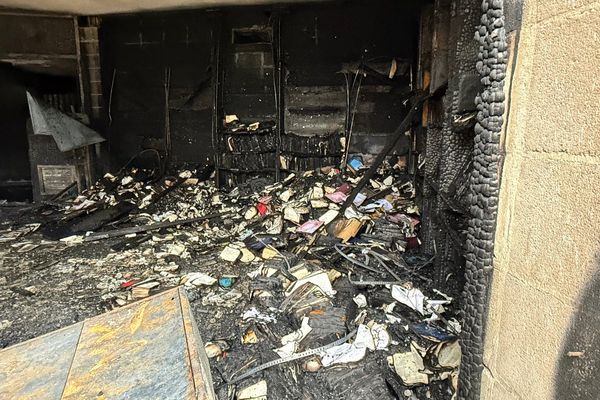
The National Gallery of Australia will stop promoting a major Aboriginal art exhibition as it investigates the alleged role non-Aboriginal people may have played in the works’ creation.
Paintings by Anangu Pitjantjatjara Yankunytjatjara (APY) artists were scheduled to go on show from 3 June for the Ngura Pulka – Epic Country exhibition.
The gallery describes the exhibition of 28 paintings as “one of the largest and most significant First Nations community-driven art projects to have ever been developed”.
But explosive allegations that white workers at the APY Arts Centre Collective (APYACC) interfered with the creation of the paintings destined for the exhibition prompted the gallery to commission an independent review into whether the Aboriginal artists “can properly be described as the artists responsible”.
The gallery will halt promotion of the exhibition until the review findings are released, which is expected by 31 May.
Prof Maree Meredith, a Bidjara woman, and Yhonnie Scarce, a Kokatha and Nukunu artist, will provide expert advice to the reviewers, lawyers Colin Golvan and Shane Simpson.
The review will determine whether the APYACC artists “exercised effective creative control over the creation of the paintings, and so can properly be described as the artists responsible for those works consistent with the National Gallery’s provenance policy”, the gallery director, Dr Nick Mitzevich, said.
It will not take into account the broader ethics in or workings of the Aboriginal art market, the cultural significance of the paintings, or whether anyone who contributed to the paintings was entitled to do so under cultural laws.
Aboriginal art depicts the artists’ Tjukurpa, the religious philosophy linking Aboriginal people to their ancestral stories.
The Australian has reported allegations that white staff regularly interfered with APY artists’ work at the APYACC, and the newspaper published a video of a white staff member appearing to paint on the work of respected Aboriginal artist Yaritji Young.
APYACC said those claims are “disingenuous”, and that the art assistant was “underpainting” and is “in no way interfering [with] the artist’s Tjukurpa”.
“We strenuously deny the over-arching narrative that APYACC art and any artists are compromised,” it said.
Guardian Australia has spoken to a range of people from Aboriginal art centres off the record, all of whom said the idea of white people interfering with black artists’ work was appalling, and that they were concerned about the effect the allegations would have on Aboriginal art more broadly.
The manager of Warlayirti Artists, Poppy Lever, said APYACC operated more like a commercial gallery than an Aboriginal art centre, which work as community centres to support artists in a range of ways.
Lever said art centres in remote areas were some of the “very few culturally informed, culturally safe, trusted organisations” on country.
“I’ve organised funerals, people’s travel, I’m a social worker, I hear people’s problems … it’s all about making the artist happy,” she said.
“Yapa [Anangu/blackfella] out here recognise that whitefella and blackfella have to work together and support each other.”
Key to that is “ngaparrku-ngaparrku” (reciprocity and two-way relationships) and working “tjungarni” (the right way) together.
“It’s not saying white people shouldn’t have anything to do with the art centres, that’s the wrong way of doing things as well. It’s about clear listening and clear understanding,” Lever said.
White people might mix paints, prime canvases, or help out if a younger artist asks for advice. They’re there to help the artists sell to a white audience, and to make sure they’re not getting ripped off.
“It’s working with the artist the way they want,” Lever said.
Ku Arts, a South Australian support organisation for Aboriginal artists that has been around for 25 years and is not affiliated with APYACC, said the claims were “of serious concern” and highlighted how stressful it must be for those artists who have spoken out.
Alison Milyika Carroll, a Pitjantjatjara Yankunytjatjara artist who is not associated with APYACC, told the ABC artists had to paint their own stories, “and not people who don’t know the stories because that story is important to Anangu artists”.
The chief executive of Desart, Philip Watkins, described the alleged actions in the video as “an aberration” and “not common practice”.
The Indigenous Art Code (IAC), a voluntary code of conduct, exists “to promote fair and ethical trade in works of art by Indigenous artists”. It was set up in the wake of a 2007 senate inquiry into the authenticity of Aboriginal arts and crafts.
Under the code, dealers must act “fairly, honestly, professionally and in good conscience” when dealing with an artist, must not exploit them, and must never be misleading or deceptive about the authenticity or provenance of an artwork.
The IAC encouraged consumers to “continue to engage in the market and ask questions” and raise any concerns with the Australian Competition Consumer Commission.







